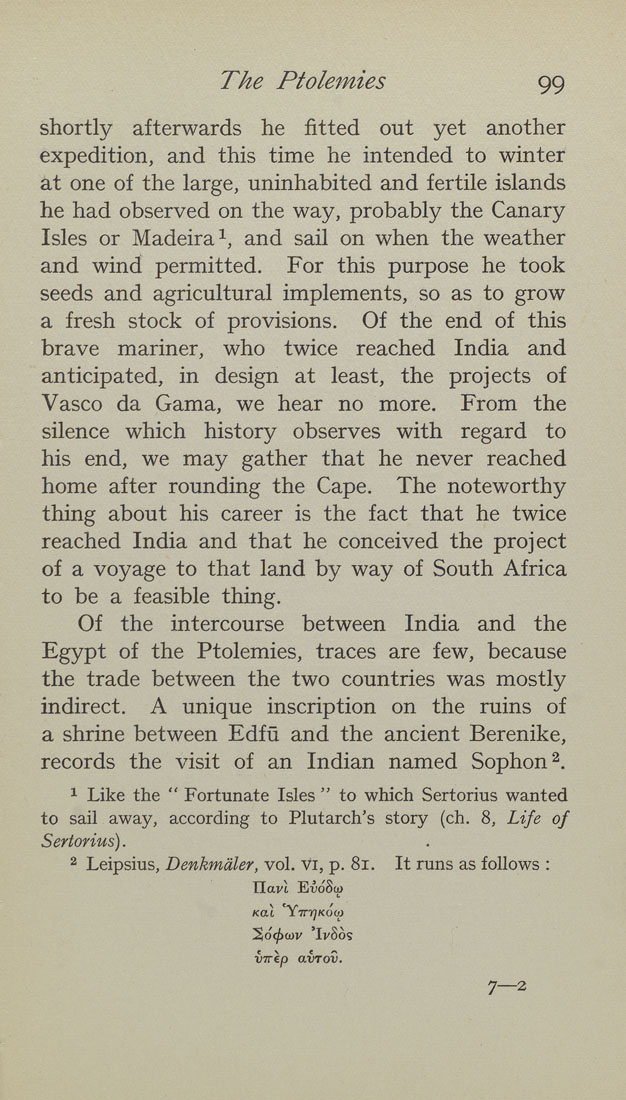The Ptolemies 99
shortly afterwards he fitted out yet another
expedition, and this time he intended to winter
at one of the large, uninhabited and fertile islands
he had observed on the way, probably the Canary
Isles or Madeira^, and sail on when the weather
and wind permitted. For this purpose he took
seeds and agricultural implements, so as to grow
a fresh stock of provisions. Of the end of this
brave mariner, who twice reached India and
anticipated, in design at least, the projects of
Vasco da Gama, we hear no more. From the
silence which history observes with regard to
his end, we may gather that he never reached
home after rounding the Cape. The noteworthy
thing about his career is the fact that he twice
reached India and that he conceived the project
of a voyage to that land by way of South Africa
to be a feasible thing.
Of the intercourse between India and the
Egypt of the Ptolemies, traces are few, because
the trade between the two countries was mostly
indirect. A unique inscription on the ruins of
a shrine between Edfii and the ancient Berenike,
records the visit of an Indian named Sophon^.
1 Like the " Fortunate Isles " to which Sertorius wanted
to sail away, according to Plutarch's story (ch. 8, Life of
Sertorius).
2 Leipsius, Denkmdler, vol. Vi, p. 8i. It runs as follows :
Tlavt EvoSu)
/cat Yttijkooj
So^wv 'IvSos
VTrep avTov.
7—2
|








